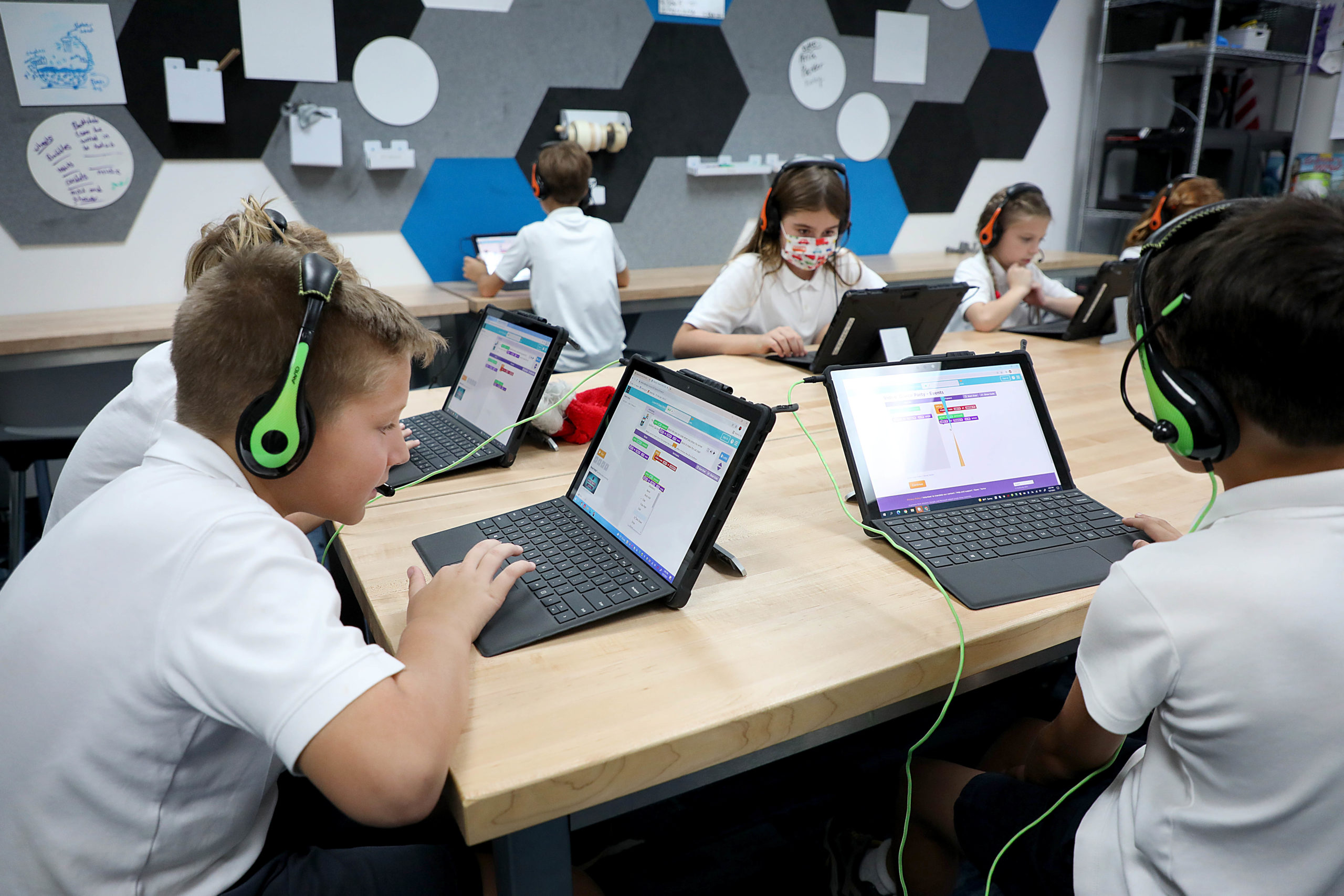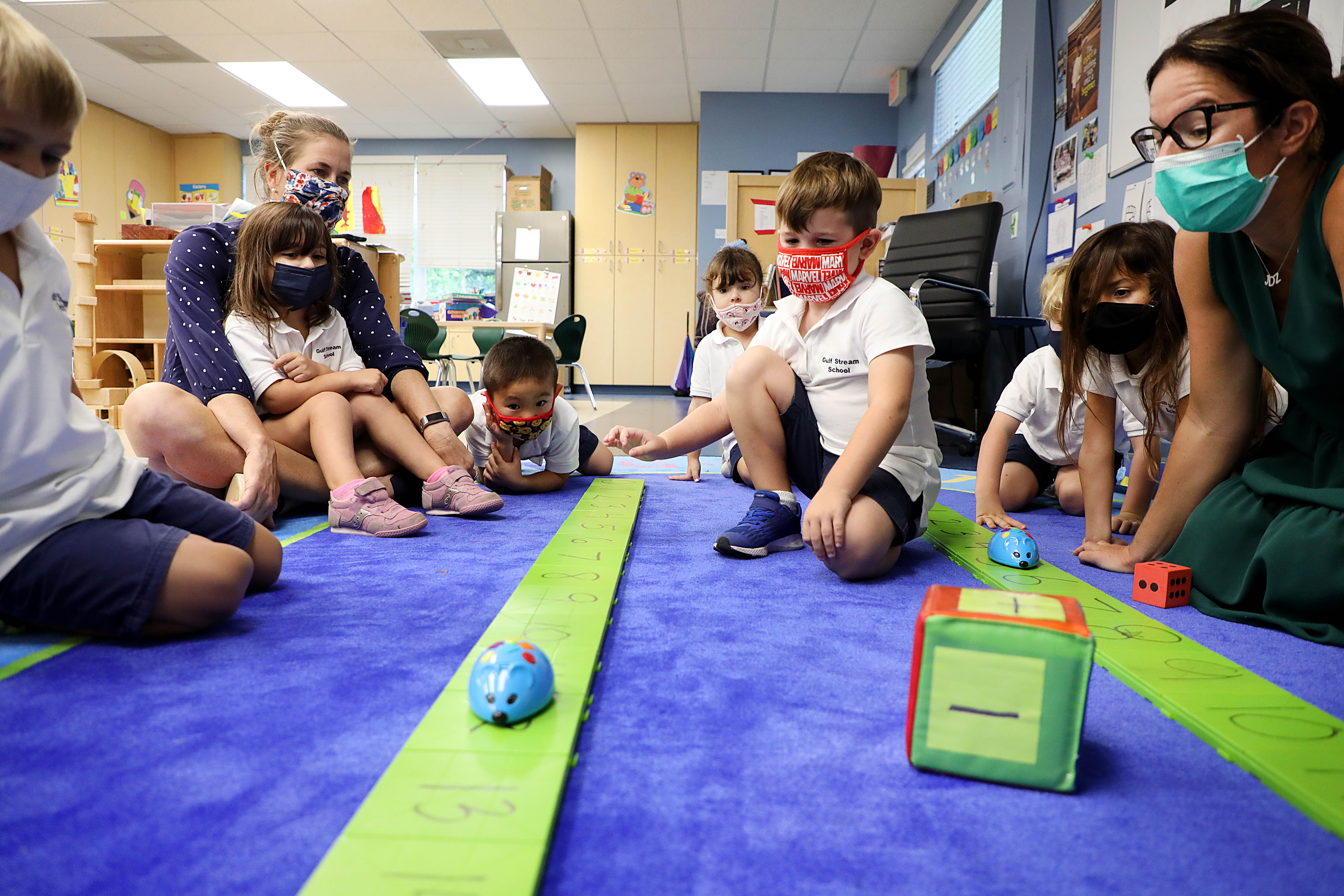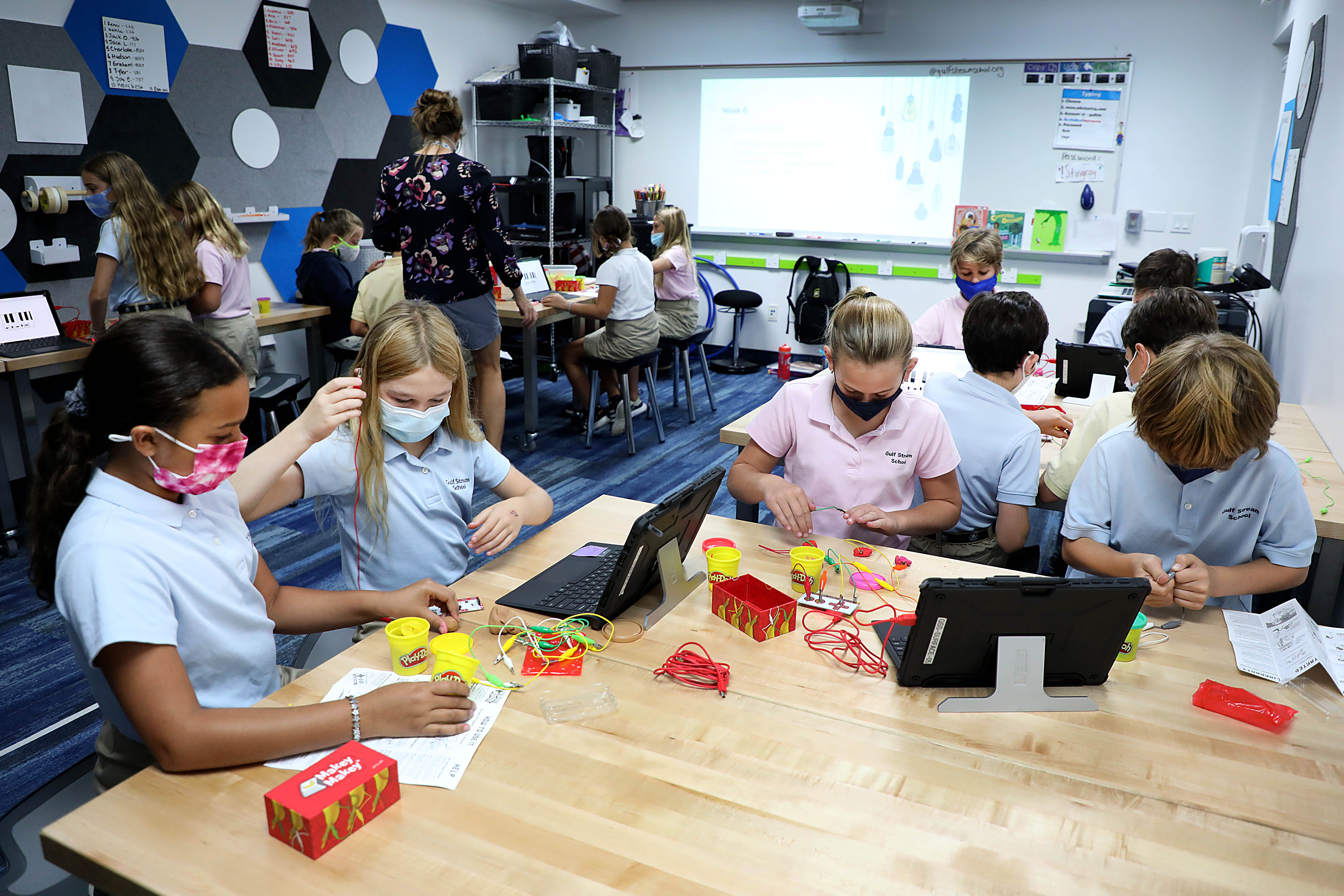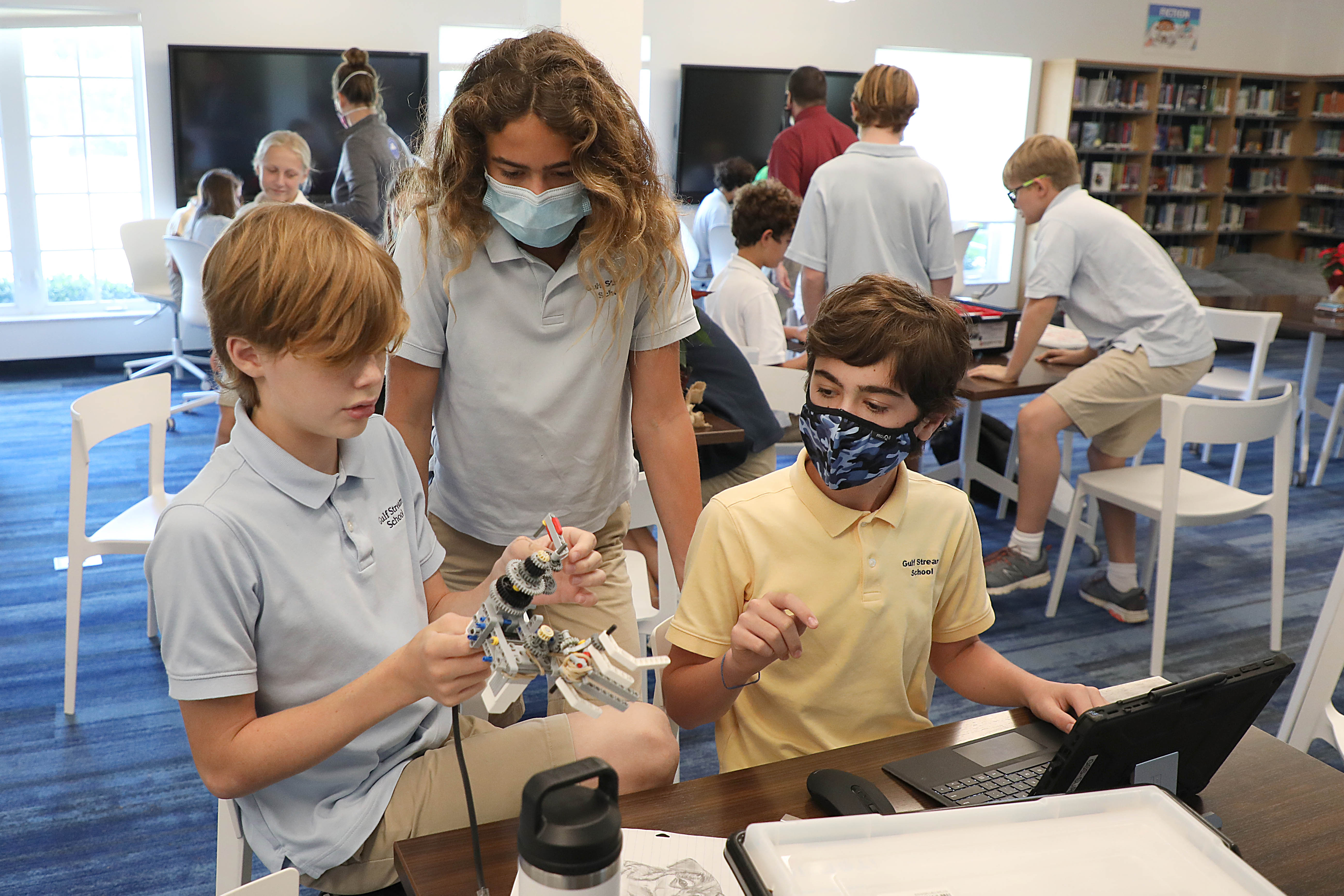
Coding and Creativity: Computer Science at Gulf Stream School
We live in a world that is changing fast. In order to prepare our students for jobs that are not created yet, for a world we may not be able to imagine, creativity and computer science are key. Every industry is impacted by technology and learning to create with technology rather than just consume it is one of our goals.
The entire school takes part in Hour of Code, which is a global movement to introduce students to computer science and usually takes place in early December. Our computer science instruction doesn’t stop there. At Gulf Stream School, we incorporate computational thinking into classroom activities throughout grade levels and give students a chance to think critically, problem-solve, apply knowledge, and learn in different ways.

Early Childhood
Students in early childhood are introduced to computer science using “unplugged” activities, robots, and LEGO WeDo 2.0. Students have
an opportunity to explore during their class in the Julien Arts and Innovation Center and during homeroom class time.
The “unplugged” activities don’t use electronics but give students a chance to think about the sequence and debug any issues. For example, during one activity in PreK, student A is the programmer and student B is the computer. The programmer gives the directions and the computer moves through a game board drawn on the ground. This activity can incorporate content knowledge when pictures are used to represent parts of a story. The programmer needs to make the computer retell the story in the correct order.
In Kindergarten students learn about their community during social studies lessons. The LEGO WeDo 2.0 is used to explore different buildings in our community. Students build and program a wind turbine while learning about environmentally friendly design, then they make an automatic door opener so their building is more accessible. Finally, they build and program an earthquake simulator to test if different buildings are durable. The unit concludes with students creating their own buildings and city.

Lower School
Beginning in Grade 1, students have Tech class in the Makerspace once a week and continue to visit the Julien Arts and Innovation Center for library class once a week. Computer science is also incorporated into lessons in their homeroom classes as well as special classes.
In science class, Grade 2 students use Bee-Bot robots during their unit on plants and animals and specifically explore how animals can help plants. They learn about how important bees are for pollination and program their own robot bees to visit different flowers. Using the ScratchJr app, second graders create and animate stories about a variety of topics, for example, the earth’s processes and habitats.
Third graders program robots in many classes including tech, library, and science. The Cue robot is used on a mat and offers a variety of applications. In one activity, students move to different areas on a world map. They use the coordinates to measure the distance the robot needs to move to each area and add voice recordings to explain the climate at each stop.
Students in Grade 4 have two tech classes per week and computer science is an important part of the curriculum. Many of the projects are cross-curricular. For example, after Grade 4 students read non-fiction books in English class and take notes on their selected topic, they take their research and create an interactive display. First, they make an item out of cardboard. Next, they connect the cardboard poster to the computer using a Makey Makey invention kit. Finally, the students write code so their poster will play recorded information about their topic when certain buttons on the poster are engaged.

Middle School
Grade 5 students also have tech class twice a week and work on more advanced concepts including coding. For one project they use a coding option on CoSpaces Edu to make augmented reality items appear on a Merge Cube. Students can take an iPad and look at the Merge Cube. This will display a variety of images related to the unit of study as well as review questions that were programmed by their peers. This is a fun way to complete a pretest review.
Although students don’t have a set Tech class in grades 6 – 8, they still have opportunities to use computer science in their classes. Additionally, Grade 7 students take a Robotics class for one half of the year. LEGO® MINDSTORMS® EV3 robots are used to complete a variety of challenges. Students build the basic robot and various attachments. Working in teams, the students program the motors and various sensors including a color sensor, touch sensor, and an ultrasonic sensor to move and turn the robot as well as interact with different objects.
Even if the students don’t pursue computer science in the future, these lessons provide many benefits. Students have a chance to go through many iterations while trying to create a successful program. They make mistakes and learn persistence while solving problems with the code. They practice computational thinking by breaking down complex problems, looking for patterns, and developing step-by-step solutions. Best of all, they have fun while doing it!
By: Bridget Langford, Lower School Science/Lower School Computer/Director of Technology for the Julien Arts and Innovation Center and Makerspace